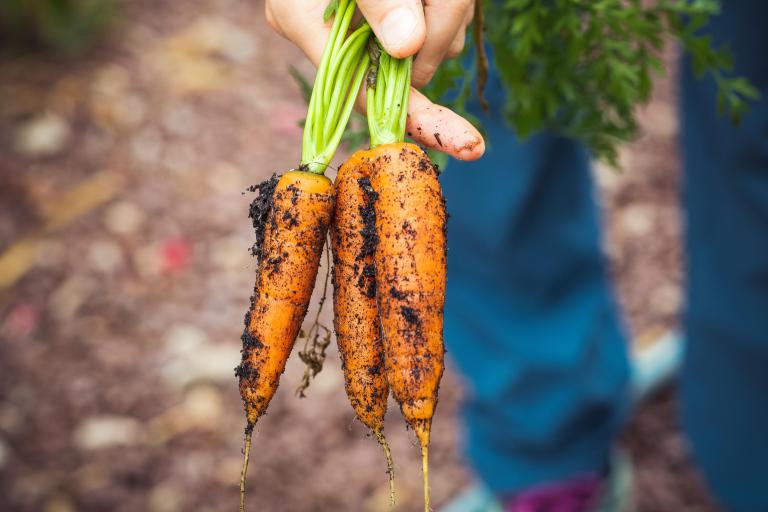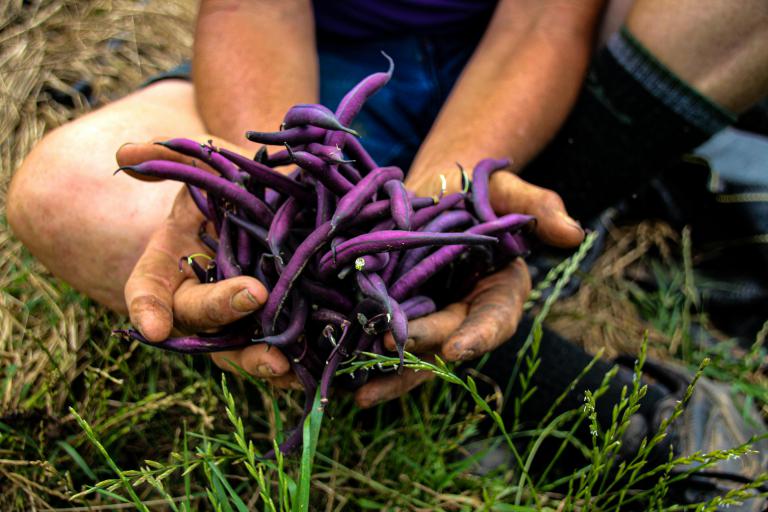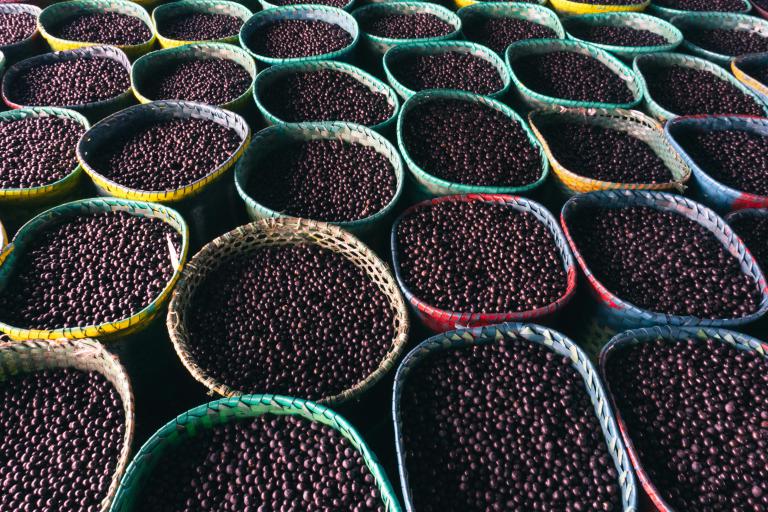Carrots are a beloved staple in many kitchens, celebrated for their vibrant hue, crunch, nutritional benefits, and versatility in both sweet and savory dishes. Yet, the journey of these delicious root vegetables from seed to table is an intricate tale that reveals the inner workings of sustainable agriculture. In this exploration, we'll delve into each step of this journey, shedding light on the practices that foster sustainability, the challenges involved, and the remarkable rewards that await those who embrace a holistic approach to farming.
Seed Selection: The Foundation of Sustainability
The journey of every carrot begins with a small but mighty seed. Choosing high-quality seeds is paramount, as genetics play a crucial role in the plant's resilience, growth rate, and nutritional profile. In sustainable agriculture, farmers often opt for organic seeds that are not only free from chemical treatments but also better suited to local climate conditions.
Why It Matters
Selecting the right seeds ensures a robust start for the plants, which can resist pests and diseases, reducing the need for chemical interventions. For example, heirloom carrot varieties like ‘Danvers’, known for their adaptability and crunchiness, can thrive in diverse environments. This resilience contributes to a reduced environmental footprint and enhances biodiversity in the local ecosystem.
Practical Benefits
By focusing on organic and heritage seeds, farmers can cultivate a depth of flavor and nutritional value that mass-produced varieties often lack, providing both economic value and healthy options for consumers.
Potential Challenges
However, the pursuit of organic seeds requires diligence. Farmers must navigate the nuances of seed sourcing, including maintaining genetic diversity and possibly facing higher upfront costs than conventional seeds. The challenge lies in balancing these initial investments with the long-term benefits of sustainability.
Planting: Nurturing the Earth
Once the seeds are chosen, it’s time to plant them in well-prepared soil. Carrots thrive in loose, sandy loam that allows their roots to grow deep and straight. Sustainable agriculture emphasizes soil health, which can be achieved through practices like crop rotation, cover cropping, and decreased reliance on synthetic fertilizers.
Why It Matters
Healthy soil, rich in organic matter, not only supports carrot growth but also sequesters carbon, combats erosion, and improves water retention—key elements in a changing climate. By nourishing the soil rather than depleting it, farmers create a resilient system that can better withstand environmental stresses.
Practical Benefits
Farmers like Dr. Allen Williams, a regenerative agriculture consultant, often advocate for techniques like planting cover crops (e.g., clover or vetch) in off-seasons. These crops prevent soil erosion, fix nitrogen, and improve soil structure, resulting in bountiful yields and a robust ecosystem.
Potential Challenges
However, the path to healthy soil can be fraught with challenges. Farmers must navigate the complexities of organic management, which may require additional effort and education on soil microbiology and pesticide alternatives. Transitioning from conventional methods can be a steep learning curve.
Growing: The Heart of Sustainable Practices
As carrots take root, the majority of the focus shifts to sustainable practices during their growing cycle. Integrated Pest Management (IPM) can play an essential role here. Instead of relying solely on chemical pesticides, farmers employ biological controls, such as introducing predatory insects or utilizing neem oil, a natural insecticide.
Why It Matters
IPM not only minimizes chemical residues in the environment but also protects beneficial insects crucial for pollination and pest control. The result is a thriving ecosystem that boosts the overall health of the farm.
Practical Benefits
Moreover, as demonstrated by successful organic carrot growers, adopting pest management strategies can yield high-quality produce that meets consumer demand for cleaner, safer food—enhancing marketability and profitability.
Potential Challenges
Nonetheless, implementing IPM requires continuous monitoring and adaptation. Farmers must become adept at identifying pest outbreaks while still weighing the cost versus benefits of various methods. This vigilance can be resource or time-intensive, particularly for novice growers.
Harvesting: The Right Moment
As the carrots grow, farmers need to be mindful of the timing of the harvest. Carrots should be harvested when they reach their full size but before they become woody. This crucial window ensures the best flavor and texture.
Why It Matters
Harvesting too late can result in a loss of quality and nutritional value, while farming too early may lead to a lackluster crop. Knowing the right harvesting window reinforces the concept of patience and respect for agricultural rhythms.
Practical Benefits
Farmers can improve flavor and texture by performing taste tests at different growth stages, offering a personal touch that resonates with consumers seeking not just food but an experience.
Potential Challenges
Harvest timing can be influenced by varying weather conditions, making it essential to remain adaptable. Adverse weather, such as an early frost, can lead to a reduced yield if farmers are not on alert.
Packing and Distribution: Bringing Carrots to Consumers
Once harvested, carrots must be cleaned, sorted, and packed carefully to maintain their freshness. Sustainable packing options, such as biodegradable materials, are becoming increasingly popular among conscientious producers.
Why It Matters
Sustainable packaging minimizes waste and appeals to environmentally aware consumers. The choice of materials impacts not just the supply chain but also reflects the values of the brand.
Practical Benefits
Businesses can boost their market presence by tapping into the growing demand for eco-friendly products. According to a Nielsen survey, nearly 73% of millennials are willing to pay more for sustainable offerings, making eco-conscious practices not just ethical but financially advantageous.
Potential Challenges
Investing in sustainable packing materials can incur higher costs, and farmers may need to educate their consumers about the importance of these materials to gain customer loyalty. Transitioning from traditional methods must be strategically planned.
From Farm to Fork: The Consumer Experience
Finally, the journey concludes on our tables, where we engage with the fruits of sustainable labor. Freshly harvested carrots, whether roasted, pickled, or enjoyed raw, offer a tangible connection to the land and the farmers who nurtured them.
Why It Matters
Consumer choices heavily impact agricultural practices. By supporting local farmers who prioritize sustainable methods, individuals can contribute to a healthier planet and food system.
Practical Benefits
Purchasing locally sourced carrots not only fosters community resilience but also reduces transportation emissions, thereby lowering our collective carbon footprint. Such decisions empower consumers to become active participants in their food systems.
Potential Challenges
However, food accessibility can pose challenges. Not everyone has easy access to local farmer's markets or organic produce. Educating broader communities about the benefits of sustainable agriculture and finding equitable ways to bridge these gaps is essential.
Conclusion: A Collective Journey
From seed selection to the vibrant crunch of a finished dish, the journey of carrots in sustainable agriculture represents a collective effort—of farmers, consumers, and the earth itself. Each step reflects a philosophy that prioritizes ecological balance, enhances flavor, and creates a resilient food system.
Ultimately, embracing the fusion of sustainability and agriculture isn't merely about growing carrots; it's about cultivating a future grounded in respect for our planet and each other. As consumers, we hold the power to support sustainable practices, ensuring that the journey from seed to table is not only efficient but thriving for generations to come. So next time you pull a carrot from your garden or pick one up at a farmer's market, remember that it embodies a narrative of hope and harmony—each crunchy bite tells a story of the birthing earth, nourished with care, and tastes like a shared future.





